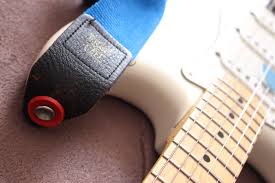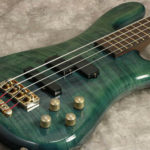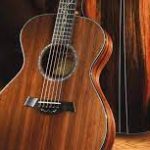Guitar Strap Guide
Acoustic/Electric/Bass
There really is no difference between straps, but certain strap models generally work better with certain instruments. With bass players, you typically find that longer, bulkier, and typically more expensive straps work better to support their larger heavier instrument.
The difference here is the method of attachment.

For electric guitars – there will almost always be two strap buttons on the body, so attachment is easy.
For acoustic guitars – most will only have one strap on the bottom of the body. So you’ll need to attach the other side of the strap to the headstock using a string.
Strap Features
Budget Guitar Straps
Most good straps under $30 are made of either nylon or cotton, with cheap leather ends.
The first common complaint with straps in this price range is that they are uncomfortable to wear for extended periods. They have a tendency to dig into your shoulder.
Midrange Guitar Straps
This middle price range, between $30-$70, is exactly where you should be shopping. Straps at these prices, will be better quality and will work best.
They’re more comfortable, they last longer, they look cooler, and they’ll keep your guitar safer. It makes sense to spend the extra money.
If you move around a lot when you play, it’s possible that the strap could slip off, causing your guitar to fall to the ground.
The truth is that as long as you aren’t playing a heavy instrument, like a bass…an $8 strap can last you years without any problems.
Guitar Strap Locking Systems
Guitar strap locks are devices that are used to secure a guitar strap to a guitar. Strap locks can be screwed into the guitar or clipped on. Screw-in strap locks are more secure, compared to clip-on strap locks, which are easier to install and remove.
Having your straps locked into place, prevents your guitar from falling and getting seriously damaged. It only makes sense to avoid expensive guitar repairs, and to preserve the value of your guitar.
Why take the chance of your guitar falling, during a live performance. It wouldn’t only damage your guitar, but it could interfere with your playing.


























